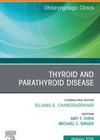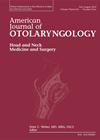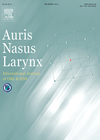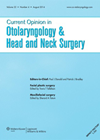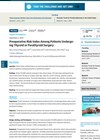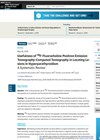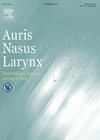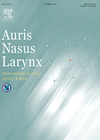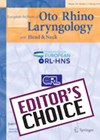
Journal Reviews
Thyroidectomy - a pictorial walk through the surgical steps
We as ENT surgeons work closely with the endocrinologist to provide MDT care for patients with a variety of pathologic conditions of the thyroid gland, including benign, malignant and hormonal disease processes. Surgery plays a central role for a variety...
Active surveillance for papillary thyroid cancers – what is the risk of progression?
Papillary thyroid cancers (PTCs) are generally considered to be indolent malignancies with favourable outcomes. Active surveillance (AS) has consequently been trialled as a management option for small PTCs with no evidence of regional lymph node involvement, especially papillary thyroid microcarcinomas...
Is a hemithyroidectomy as effective as a total thyroidectomy for compressive symptoms?
The claim made in the title of this paper, that hemithyroidectomy is equally as successful as total thyroidectomy in alleviating compressive symptoms from goitres, is certainly intriguing. And with the inclusion of 45,539 subjects, it would at first glance seem...
Surgical outcomes of myringoplasty using platelet-rich plasma
Tympanic membrane (TM) perforations can affect people’s quality of life due to recurrent infections. Management is often by surgical repair. In this study, the authors investigated the outcomes of a minimally invasive approach of patch myringoplasty using an atelocollagen sponge...
What is the right balance to strike in the management of anaplastic thyroid cancer?
This is a pragmatic article on a difficult and much debated subject. Management of anaplastic thyroid cancer (ATC) can feel like making decisions between a rock and a hard place, and this article suggests one path to help navigate some...
Prediction of morbidity and mortality in patients undergoing thyroid or parathyroid surgery
Major postoperative adverse events in thyroid or parathyroid surgery are uncommon. Various authors have developed risk indices to identify physical deficits in patients undergoing elective surgery. The literature is less clear about patients undergoing thyroid or parathyroid surgery. In this...
Thyroidectomy patient survey regarding voice outcomes
One of the common adverse effects following thyroid surgery is a change in voice, which may be related to iatrogenic injury to the recurrent laryngeal nerve or superior laryngeal nerve during surgery or by direct cancer involvement. The burden of...
Association of quality of life with type of surgical treatment in patients with differentiated thyroid cancer
Standard treatment for differentiated thyroid cancer (DTC) is surgery, which includes either a total thyroidectomy or hemithyroidectomy. Surgery may then be followed by radioactive iodine treatment and, for some, treatment with thyroid hormone to suppress thyrotropin levels. All patients undergoing...
Choline PET-CT: an accurate diagnostic tool for the detection of parathyroid adenoma?
Hyperparathyroidism (HPT) is an endocrine disorder characterised by an increase in the secretion of parathyroid hormone (PTH), with a resulting increase in calcium plasma levels, which can cause renal lithiasis, fractures, and osteoporosis, the most frequent symptoms of the disease....
Stapedotomy in osteogenesis imperfecta
Osteogenesis imperfecta (OI) is a rare connective tissue disease caused by a defect in collagen structure. Hearing loss is a characteristic feature of OI. It typically presents with conductive hearing loss initially, followed by a superimposed sensorineural component later in...
Association between Meniere’s disease and vestibular migraine
Meniere’s disease (MD) and vestibular migraine (VM) are two conditions with overlap in their symptoms. There is often a lack of understanding regarding symptom-based differentiation between them. MD presents with episodic vertigo, fluctuating hearing loss and tinnitus. MD has been...
Outcomes for transoral vestibule approach thyroid surgery
Ed’s choice explores a systematic review examining one of the recent innovations in head and neck surgery. It may come as a surprise to some that within a few years of the first published cases of transoral vestibule thyroidectomy, an...

